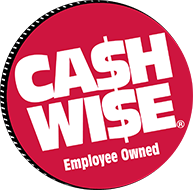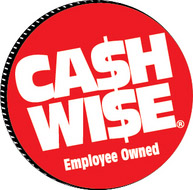
Let’s talk food waste.
Many families stocked up on groceries in the beginning of this pandemic and are now doing their best to limit extra trips to the grocery store. Although we may be enjoying more meals at home with our family, many of us are also struggling with food waste. Below are some great tips to keep your produce lasting longer, plus we’re sharing a delicious recipe that can have dinner on your table in less than 20 minutes!
Proper Storage
Clean and organize your fridge. Simply organizing your refrigerator may help you from wasting food. Always be sure that your food is visible! If you can’t see it- you’ll likely forget about it and it will spoil before you find it again. When bringing home groceries, always be sure the older items are closer to the front, and the newer items in the back. We call this the FIFI Method (First in, First Out).
Where do I store what?
When it comes to fresh produce, it can be tricky to know what items to store where in order for them to last longer. Here is a breakdown:
- On the Counter
- Bananas
- Cucumbers (FYI -if you store them in the fridge, they are best within about 3 days.)
- Garlic
- Grapefruit
- Lemons/Limes
- Onions
- Potatoes
- + others
- In the Fridge:
- Apples
- Asparagus
- Berries
- Cherries
- Leafy Greens
- Cilantro
- + others
Don’t forget about ethylene producing foods! Apples, Avocado, Bananas, Cantaloupe, tomatoes, + more give off an ethylene gas. Be careful to place to not store these items next to each other or other ethylene sensitive produce items like cucumbers, lemons/limes, potatoes and grapes. Why does it matter? Produce that is stored incorrectly, will spoil quickly!
Plan your Weekly Menu
We’ve created a great Meal Planning Guide that will walk you through the HOW to meal plan, AND it even gives you a 7 day meal plan including recipes and shopping lists! (Can you say, “Yes, please!”)
Since we are all home more often, don’t forget to have a plan for breakfasts, lunches, and even snacks.
My favorite tip: Check your inventory (the refrigerator, freezer and pantry!) Plan your meals with the food that you already have on hand. For example, if you already have sweet potatoes, frozen corn, and a can of black beans, you already have some of the main ingredients for a simple recipe like our Southwestern Stuffed Sweet Potatoes
And if you REALLY want to make grocery shopping and meal planning easy… shop ONLINE from your HOME! It’s the best of both worlds…check your inventory as you shop and only purchase what you need! (Shop in-store or order online for pickup at all locations! (Or delivery if you are in the St. Cloud or Elk River area!
Featured Recipe Southwestern Stuffed Sweet Potatoes
______________________________________________________
How does Date Labeling Impact Food Waste?
We’ve turned to Kim, our Food Safety and Nutrition Manager, Registered Dietitian to talk about this.
Do you ever wonder when you go grocery shopping “what do those dates on the packages actually mean”? Best if Used By, Sell By, Use By….what are these dates telling us?? Well, let me help explain.
Product dating is truly up to each manufacturer. Federal regulations actually do not require food products to be labeled with a date, with the exception of baby formula. If a food manufacturer does choose to date a product, this is where the requirements kick in. If using a calendar date, it must include both the month and the day. They must also include a year if it is a shelf stable or frozen item. In addition, this date needs to include a statement such as “Sell By”, “Use By”, etc.
Interesting Tidbit – Although Federal regulations do not require dating on product labels, dating of select food items is required in 20 or so states, Minnesota and North Dakota are among those.
Product dating can be presented in basically two ways. Either through what is called Open Dating or Closed Dating. Open Dating is essentially calendar dating which is easily understood by the consumer. As I talked about earlier, this will include a month and a date and often the year. Closed Dating, on the other hand, also known as coded dating, is just that….a code. These codes can be presented in various forms including random numbers and letters which are not intended for the consumer to understand. These codes allow the manufacturers to track their products and may often represent the date of production, which manufacturing plant the product was produced in, etc.
A little more about open dating and the words typically used (from USDA’s Food Safety and Inspection Service):
- Sell By – tells the store how long to display the product for sale. You should buy the product before the date expires.
- Best if Used By – recommended for best flavor or quality. It is not a purchase or safety date.
- Use By – is the last date recommended for the use of the product while at peak quality. The date has been determined by the manufacturer of the product.
As stated above these dates refer to the quality of the product not the safety which is a common misconception. Foods impacted by spoilage bacteria may exhibit changes in flavor and appearance and may have an off odor, these products should not be used due to poor quality. It is important to note that spoilage bacteria do not impact the safety of the food. Pathogens (organisms that will make you sick) do not give off any odors nor do they make food taste or look badly. It is also important to remember that mishandling of the product can cause rapid bacterial growth and if pathogens are present at even the slightest level this mishandling can cause the levels to grow and then foodborne illness can result. So, it is very important to handle foods properly, specifically those food items that are perishable (requiring refrigeration). Some examples of mishandling include:
- Allowing product to sit too long in the Danger Zone..…remember “The Danger Zone”?? this is from 41°F-140°F
- Thawing product at room temperature – this should always be done under refrigeration or if in a hurry under cool running water or in the microwave and cooked immediately afterwards
—-
Happy & Healthy Eating!
- Amy, MS, RD, LD – Supermarket Registered Dietitian
- Kim, RD, LD, CP-FS – Food Safety Manager, Registered Dietitian







